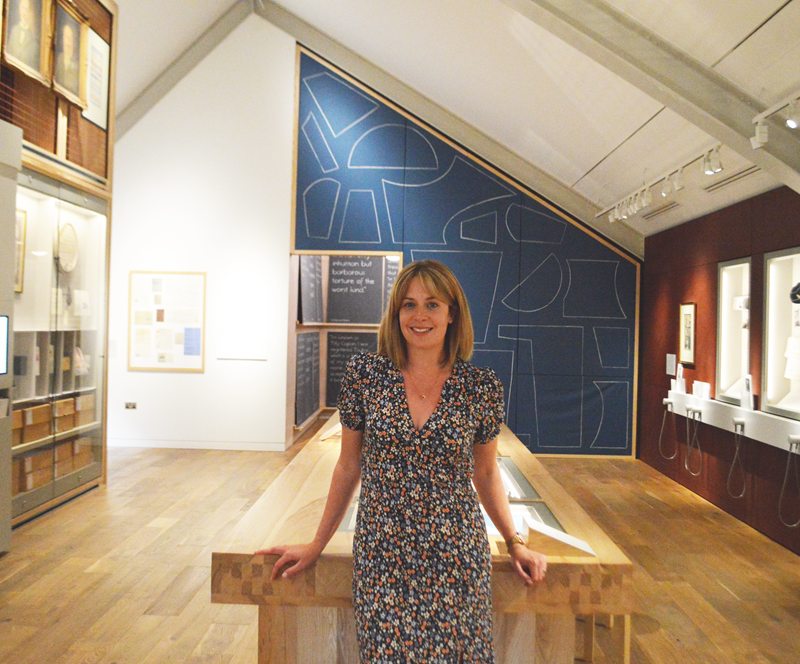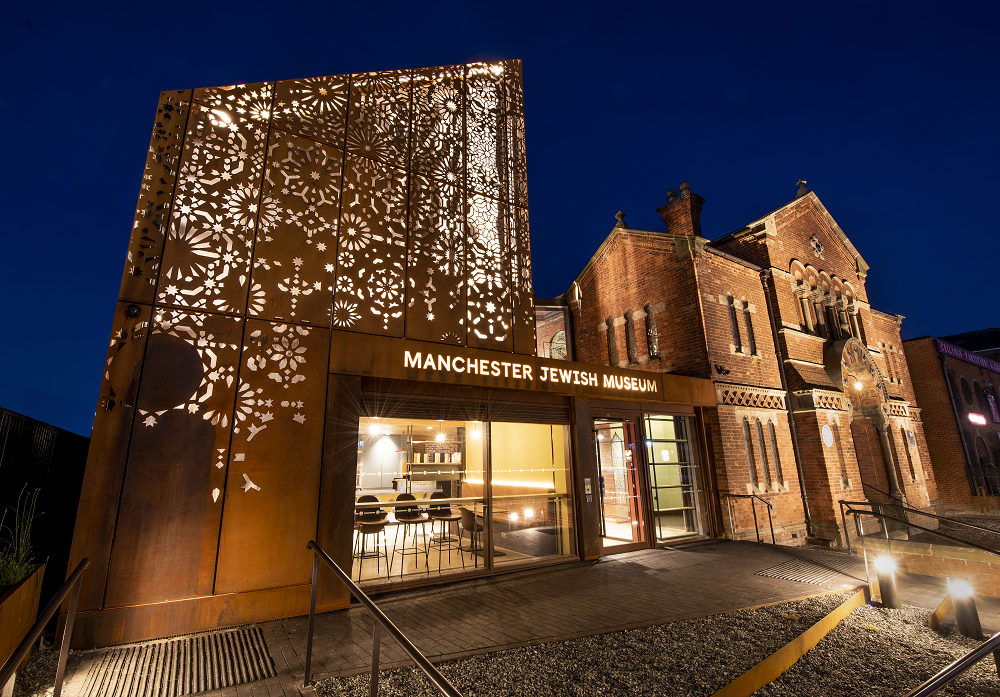Restoring our Synagogue Windows
Restoring Manchester’s oldest surviving synagogue is no mean feat.
Built in 1874, our synagogue is now a Grade II* listed building and has been fully restored as part of our multi-million pound redevelopment. Reopening this summer, the museum’s synagogue has been described as a “jewel” by architectural historians and is a living artefact telling the story of Jewish migration in the 1870s.
The new museum has been designed by architects Citizen Design Bureau and a full team of specialist contractors including historic painters and stained-glass experts have spent the last two years restoring the synagogue to its former glory so our visitors can experience the historic beauty at its original best.
One of the most striking features of the Sephardi synagogue is its beautiful stained glass windows. We spoke to Stephen Evans from stained glass restoration experts Recclesia Ltd. to understand what the challenges of restoring such a historic building are, and what visitors should look out for when they visit this summer.
- Stained glass repairs at Manchester Jewish Museum
- Stained glass repairs at Manchester Jewish Museum
Tell us about yourself and Recclesia Ltd.
I’m Stephen Evans and I am the Contracts Manger for stained glass restoration at Recclesia Ltd. Recclesia is a multi-disciplined historic building conservation contractor and consultancy with expertise in stained glass, stonemasonry, timber conservation and metalworks. We specialise in the conservation and repair of historic and listed buildings, churches, ancient and ruins. We work throughout the UK and internationally on specialist projects with leading conservation architects organisations, museums and historic building owners.
What does stained glass restoration involve?
Stained glass restoration has many processes. It begins with a study of the window and, wherever feasible, its history is undertaken to determine the original designer and maker of the windows and an idea of the original installation dates. The windows are then surveyed and we look for evidence of any damage such as fractured glass and lead frameworks. Once a window has been identified for restoration it will be removed from its frame and transported back to the conservation studio. Here the windows will be photographed and we take a rubbing of the window to trace all the lines of the lead framework. The glass is then stripped away from the lead frame and cleaned using de-ionised water, cotton buds and soft rags – it’s all very painstaking. Any replacement glass is matched and replaced. If any glass pieces require painting then our studio artist will paint the new pieces and fire them in a kiln. This process is repeated until we have an exact match. Once the glass is cleaned it is re-assembled into the lead framing. The last process is a messy one. The windows need to be weather proofed and this is done using cement and then left to dry. The window is given a final polish and clean and returned to its original resting place to be admired for many years to come.
- Stained glass repairs at Manchester Jewish Museum
- Stained glass repairs at Manchester Jewish Museum
What are the biggest risks when restoring or repairing historical stained glass features?
If we are repairing stained glass on site we need to be careful that we do not damage any adjacent pieces. The glass tends to vary in thickness from 1.5mm – 8mm and can fracture if any pressure is applied in the wrong places. When the windows are being removed and the lead frames are in poor condition then the stained glass can just fall apart. If there has been extensive damage from vandalism then often a lot of glass is lost. We then have to piece back as many of the original fragments back together like a jigsaw to attempt to replicate what was there originally. Often the original glass is obsolete and hunting down glass that is a good match to the original is often a tough task.
What was it like repairing and restoring the windows of the 1874 synagogue?
They were a challenge as in they were circular panels that were housed in a metal frame and surrounded by stone. Each window was made up of 5 sections – circular centre and four arched quadrant surrounds which took time to rebuild. The panels were also heavily soiled with a mixture of grime and exhaust dust which took a lot of cleaning! Some of the broken glass in the panels from 1974 are now obsolete and it was difficult to find a good match, but we managed to find some really good matches in our extensive stock.
Is there anything visitors should look out for in the synagogue?
The newly restored synagogue will be a fantastic space and a really exciting place to visit. I think the time capsule that was discovered on site will be particularly something to look out for and because I am a keen cricketer, I would love to see the Russian washboard in their collection that was used as a cricket bat!
Recclesia are conservators & makers of stained glass, leaded lights, historic glazing and associated metalwork.
Visit their website at www.recclesiastainedglass.co.uk or follow them on Twitter at @recclesiaglass










